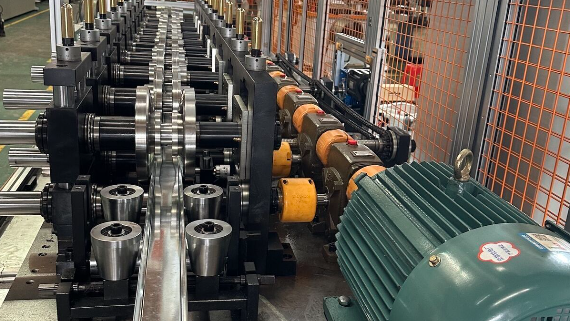1. Compliance with Electrical Standards
- Ensure that the roll forming machine complies with relevant national and international electrical safety standards such as:
- NFPA 70E (Standard for Electrical Safety in the Workplace)
- OSHA (Occupational Safety and Health Administration) regulations for electrical safety in manufacturing environments
- IEC 60204-1 (Safety of Machinery - Electrical Equipment of Machines) for international markets
- Machines should be properly labeled with electrical safety warnings and ratings.
2. Proper Grounding and Bonding
- All electrical systems must be adequately grounded to prevent electrical shock hazards. Ensure that all exposed metal parts are bonded to the ground to eliminate the risk of becoming live due to electrical faults.
3. Safe Electrical Panel Design
- The electrical control panels of roll forming machines should be designed with proper enclosure ratings (IP ratings or NEMA enclosures) to prevent dust, moisture, and accidental contact with live components.
- Panels must include proper emergency stop buttons, safety relays, and interlocks.
4. Circuit Protection Devices
- Install circuit breakers or fuses to protect electrical circuits from overloading and short circuits.
- Ensure that the machine has appropriate overload protection for motors, transformers, and other electrical components.
5. Lockout/Tagout (LOTO) Procedures
- Implement Lockout/Tagout (LOTO) protocols to isolate energy sources during maintenance or repair. This prevents accidental machine start-ups while servicing, ensuring worker safety.
6. Regular Electrical Inspections and Maintenance
- Conduct periodic electrical system inspections to identify worn-out wires, damaged insulation, and potential faults.
- Ensure that electrical components are regularly maintained, and any issues are addressed immediately to avoid safety risks.
7. Operator Training on Electrical Safety
- Operators and maintenance personnel must receive training on the electrical systems of roll forming machines, including proper operation, emergency procedures, and hazard recognition.
- Provide specific training on electrical safety protocols, such as how to properly operate emergency stops, circuit breakers, and how to respond to electrical hazards.
8. Use of Personal Protective Equipment (PPE)
- Workers interacting with electrical components should wear appropriate PPE, such as insulated gloves, boots, and face shields, especially during maintenance.
- Ensure that electrical PPE is tested and rated for the voltages and potential hazards in the workplace.
9. Isolation of High-Voltage Areas
- Any areas with high-voltage equipment should be restricted to authorized personnel only, and clearly marked with warning signs. Secure access to electrical panels to prevent accidental contact.
10. Use of Surge Protection Devices
- Install surge protection devices (SPDs) to safeguard the machine’s electrical components from voltage spikes, especially in facilities prone to lightning strikes or unstable power supplies.
11. Emergency Power Shutdown
- Ensure that there is an emergency power shutdown system in place, easily accessible to operators, to cut off electrical power in case of an emergency or malfunction.
By adhering to these electrical safety requirements, roll forming machine operators and technicians can work safely and minimize the risk of electrical-related accidents.




